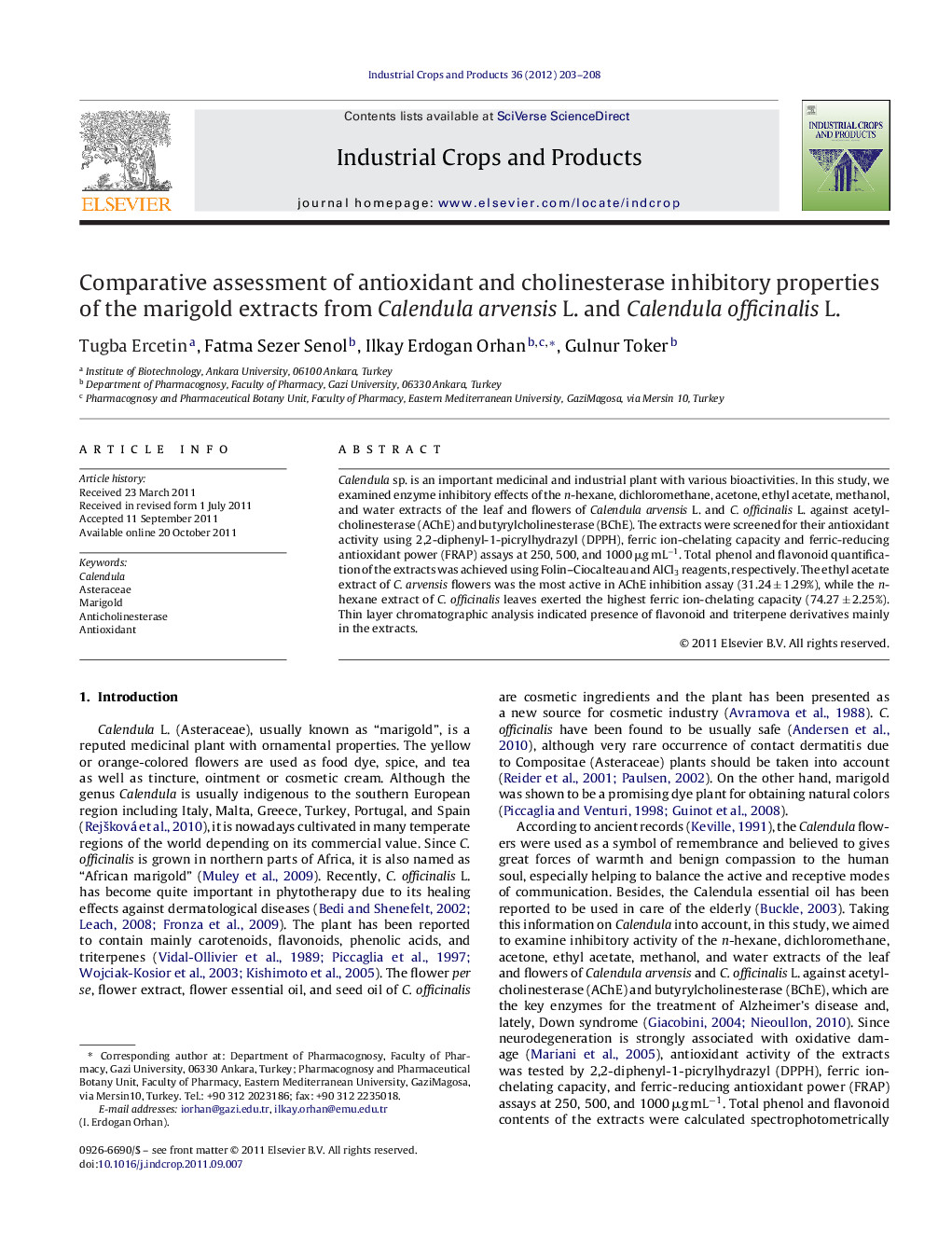| Article ID | Journal | Published Year | Pages | File Type |
|---|---|---|---|---|
| 4514373 | Industrial Crops and Products | 2012 | 6 Pages |
Calendula sp. is an important medicinal and industrial plant with various bioactivities. In this study, we examined enzyme inhibitory effects of the n-hexane, dichloromethane, acetone, ethyl acetate, methanol, and water extracts of the leaf and flowers of Calendula arvensis L. and C. officinalis L. against acetylcholinesterase (AChE) and butyrylcholinesterase (BChE). The extracts were screened for their antioxidant activity using 2,2-diphenyl-1-picrylhydrazyl (DPPH), ferric ion-chelating capacity and ferric-reducing antioxidant power (FRAP) assays at 250, 500, and 1000 μg mL−1. Total phenol and flavonoid quantification of the extracts was achieved using Folin–Ciocalteau and AlCl3 reagents, respectively. The ethyl acetate extract of C. arvensis flowers was the most active in AChE inhibition assay (31.24 ± 1.29%), while the n-hexane extract of C. officinalis leaves exerted the highest ferric ion-chelating capacity (74.27 ± 2.25%). Thin layer chromatographic analysis indicated presence of flavonoid and triterpene derivatives mainly in the extracts.
► Calendula sp. is an important medicinal and industrial plant. ► The leaf and flower extracts of C. arvensis and C. officinalis were examined for their antioxidant and inhibitory activity against AChE and BChE. ► The flower methanol and ethyl acetate extracts of C. arvensis with the highest DPPH radical scavenging activity. ► This is the first study on cholinesterase inhibitory and antioxidant activity by FRAP assay of C. arvensis and C. officinalis.
